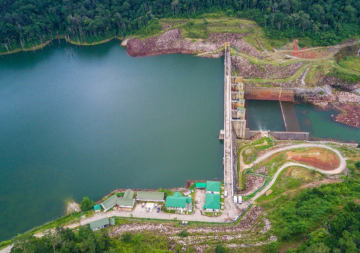
This case study reflects on the unexpected impact of a sustainable infrastructure project in Laos. The NT2 dam, which began operations in 2010, was promoted as a stateof-the-art, poverty-alleviating sustainable dam project for its grounding in extensive social and environmental research and monitoring at all stages of the infrastructure project cycle.
While the dam was promoted as an exemplary hydropower project that addressed environmental and social risks, once in operation, it became clear that some key stakeholder communities were in fact worse off after the dam was built. Although the project’s Environmental Assessment and Management Plan (EAMP) provided multiple rounds of environmental assessments, environmental monitoring, and protection initiatives (such as the creation of the on-site water laboratory, the establishment of the Panel of Experts, and funding fish research), the dam also has had a significant negative effect on water quality, aquatic plants, and wildlife. For example, fish stocks were found to have decreased by 25% in 2011. The significant decline in fish stocks and other aquatic species has further distressed local communities, especially more vulnerable groups who rely on those resources.
Guiding principle #7 Enhancing Economic Benefits, from the International Good Practice Principles for Sustainable Infrastructure.



